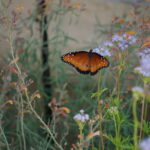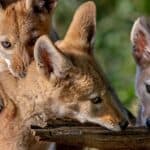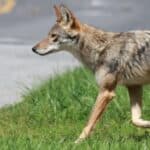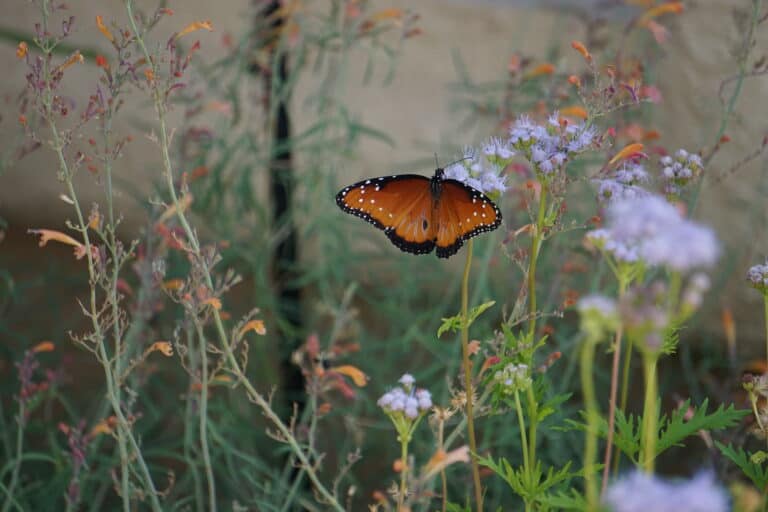Notes From The Field Blog by Kelly Borgmann, Midwest Coexistence Coordinator for Project Coyote and The Rewilding Institute
Much of Project Coyote’s news of coyotes, wolves, bobcats and other wildlife may seem like it comes from the wild frontier of nature. We share with you stories about stopping wildlife killing contests, working to relist wolves, and fighting the senseless destruction of our wildlife populations. But coexistence doesn’t just need to happen in remote areas, it also needs to happen in our own backyards.
I was recently reminded of this fact myself. In May, I took a vacation to the desert southwest. I got to spend a week with my mom and sister exploring the canyons and trails in Zion and Bryce National Parks and enjoyed paddling the cool waters of the Colorado River. When I returned, it was to a lush, green backyard and a garden quickly growing out of control.
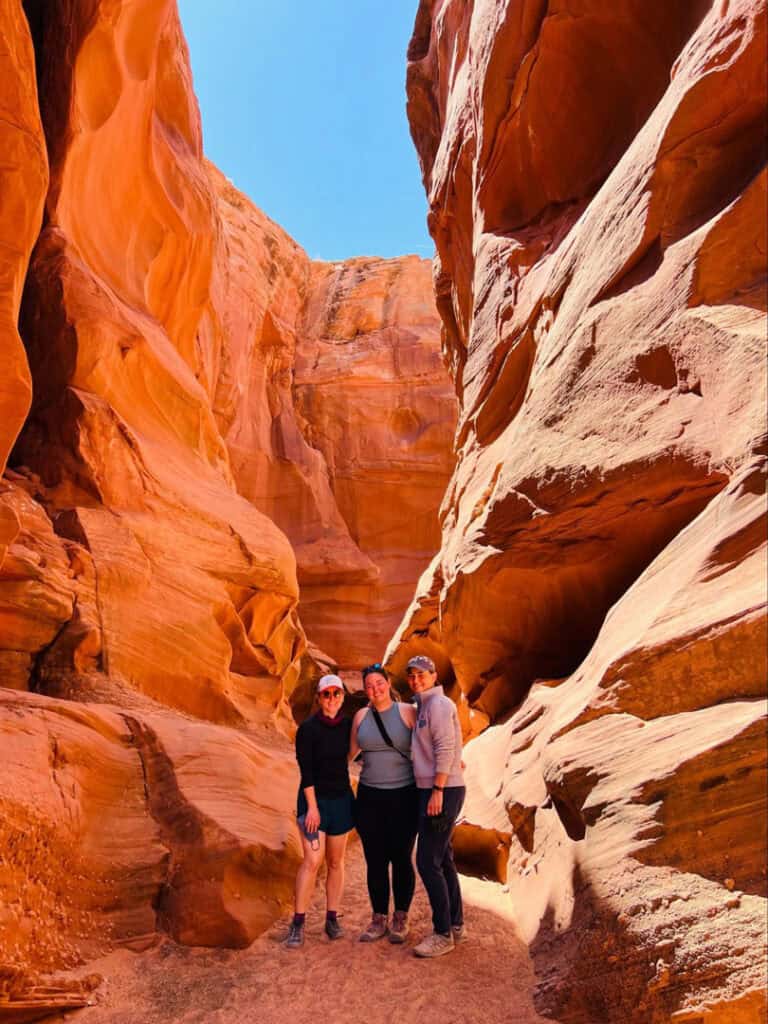
I soon discovered though that in my absence someone had decided to take up residence in my yard: a mother cottontail rabbit and her young brood. To be perfectly fair to the rabbit, I purposely try to make my garden a native plant oasis, refrain from using herbicides and pesticides, and enjoy growing leafy vegetables. If I was a mother rabbit, I too would think my yard was a slice of heaven, especially when you add that it is fenced well enough to keep a dog inside. While I was gone, that rabbit probably thought she hit the jackpot.
Unfortunately for her, that fence is good enough to keep a dog in because it is meant for my 2-year-old Australian shepherd, Rowan. Rowan, being a healthy, active, and curious pup, does not understand that baby rabbits are not toys. When he found one of the small fluff balls, he did what any rambunctious young dog would do and put it in his mouth.
I was too slow to realize what was happening to that poor baby and felt completely awful. I have volunteered with wildlife rehabilitators in the past and know how to search for and protect rabbit nests in the yard. I had wandered the yard looking for a nest when I got back, but upon not seeing one had let Rowan outside without supervision. After I took the baby rabbit from his mouth I did a more thorough search and found the nest hidden in a thick clump of irises.
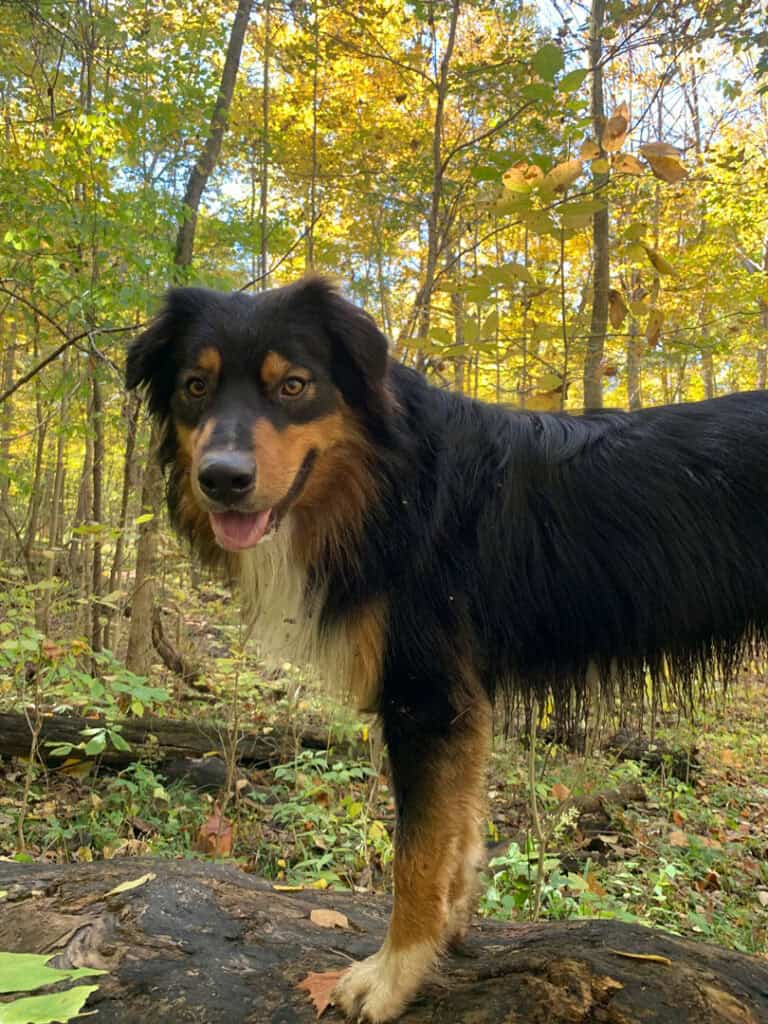
After this incident, I knew I needed to find a way to coexist with the rabbits. Yes, plenty of rabbits thrive in my neighborhood, but that doesn’t mean these rabbits have any less right to live as best they can. These babies will face a lot of obstacles on their way to adulthood, and the last thing they need is a dog terrorizing them. That means it is my responsibility to ensure they have the space they need to remain wild and safe from myself and Rowan.
The first step was to secure the nest. I had some wire grid fencing left over from securing my raised garden beds that I cut so there was a hole big enough for the rabbits to go through. This, I staked around the nest. It will keep Rowan away from the nest and allow the rabbits to come and go as they please.
Next, I made sure my backyard lights were working. Rabbits are crepuscular, meaning they are generally active during dawn and dusk. Before I let Rowan outside during these times, I need to be sure that the rabbits were not in the yard. With my lights in working order, I can simply turn them on and step outside on my patio to see if the rabbits are out. If they are, I don’t let Rowan outside, and if they aren’t, I let him out with supervision.
That last part is critical. While it may be a pain to always watch my pup when he is outside in the fenced yard, it is important that I keep an eye on him, at least until the rabbits are big enough to leave the yard. Rabbits will freeze when they are startled, and the baby rabbits can be easy to miss in my initial survey, as I tragically discovered. If I want to keep them safe, then I need to watch Rowan when he is playing in the yard.
Now, I didn’t want to have to go through all of this again later in the summer. Rabbits average three to four litters a year, but they can have as many as seven! Just because I was willing to go through all this work once didn’t mean I wanted to repeat the process again and again. My next project was to find a way to keep the mother rabbit from having another litter in my backyard.
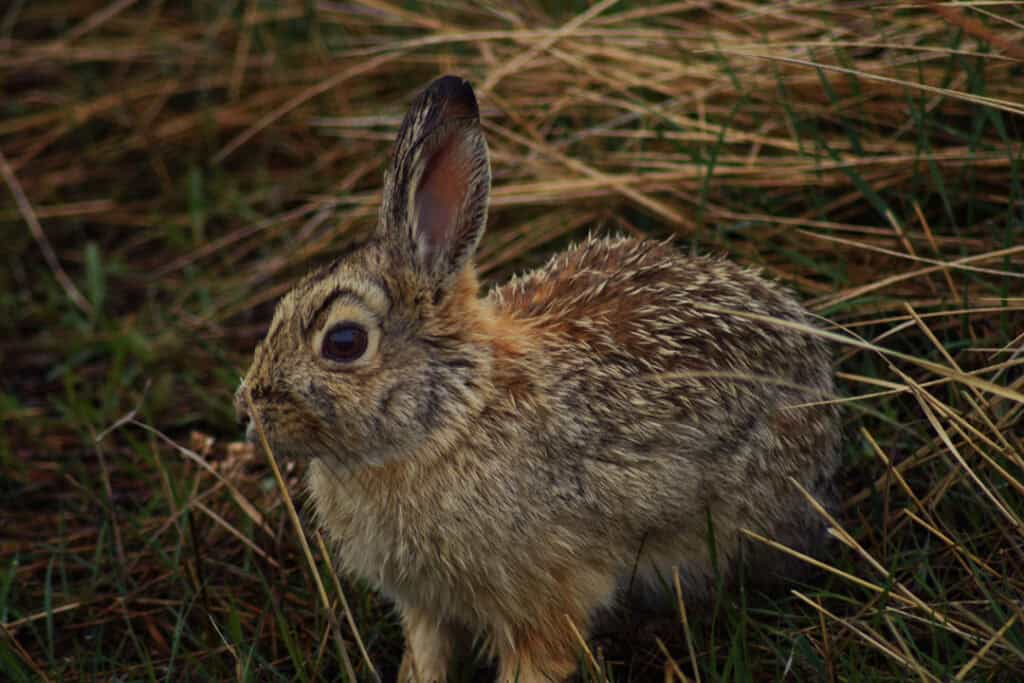
When wildlife continually visit your yard it is because there are attractants, some resource(s) that they want. Food, water, shelter, and space are the big four categories. If you have these, then you have a home for wild creatures. My yard provides all four and this is why the mother rabbit decided to take up residence. Since she hadn’t yet chosen to move her young, it seemed Rowan was not perceived as a large enough threat. So if I didn’t want her to return, I needed to remove some or all of the attractants in my backyard.
I had already fenced my garden beds and removed anything that could hold water. All that was left was to clear the wood pile that provides shelter and plug the holes that allow the rabbit to access the space. I waited until the rabbits had grown big enough to leave the yard on their own and then I completed these last tasks.
This is what it means to coexist with wild nature. I am giving up something (my time and the ease of just letting my dog out) and eventually so will the rabbit (access to my backyard). It is a compromise that we can both live with, even if that mother rabbit can’t actually speak with me and agree.
I wanted to share my story with you because it is a vital reminder that if we desire a future where people and wildlife thrive then we all need to choose coexistence. It isn’t just the people who live near wild places who have to make the effort, we all need to practice what we preach. And while my story involves cute little rabbits, it could have just as easily involved birds, raccoons, opossums, squirrels, coyotes, foxes, deer, or any other number of wildlife. Urban environments are increasingly populated with wildlife and coexistence is more important than ever.
If you would like to learn more about coexisting with our wild neighbors, please check out all the great information on the Project Coyote website. I also encourage you to reach out and donate or volunteer with your local wildlife rescue and rehabilitation organization. You can find rehabilitators near you on the Animal Help Now website–although if you plan to bring them an animal, you should be sure the animal actually needs help by calling and talking to the rehabber. Thanks for looking out for wildlife and happy coexistence!
Kelly Borgmann is the Midwest Coexistence Coordinator for Project Coyote and The Rewilding Institute.

